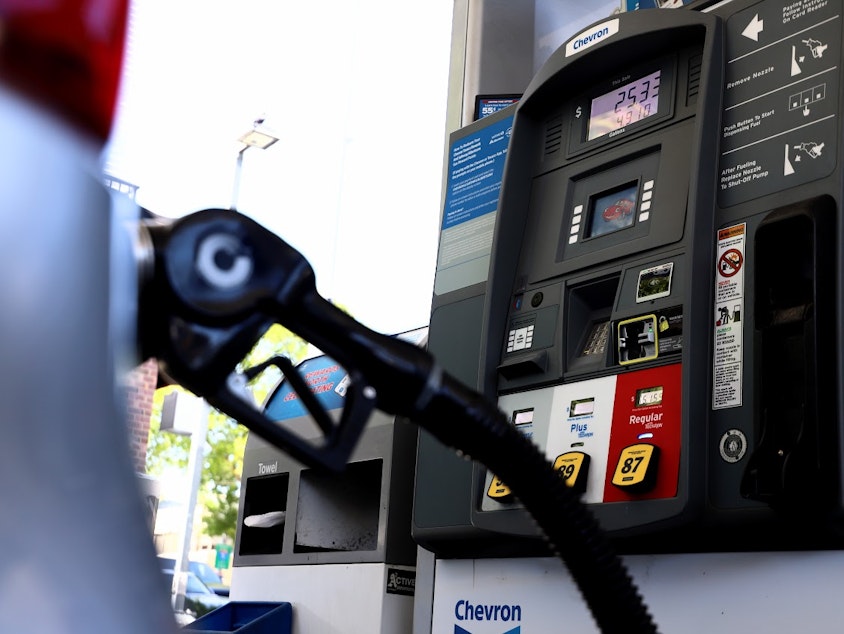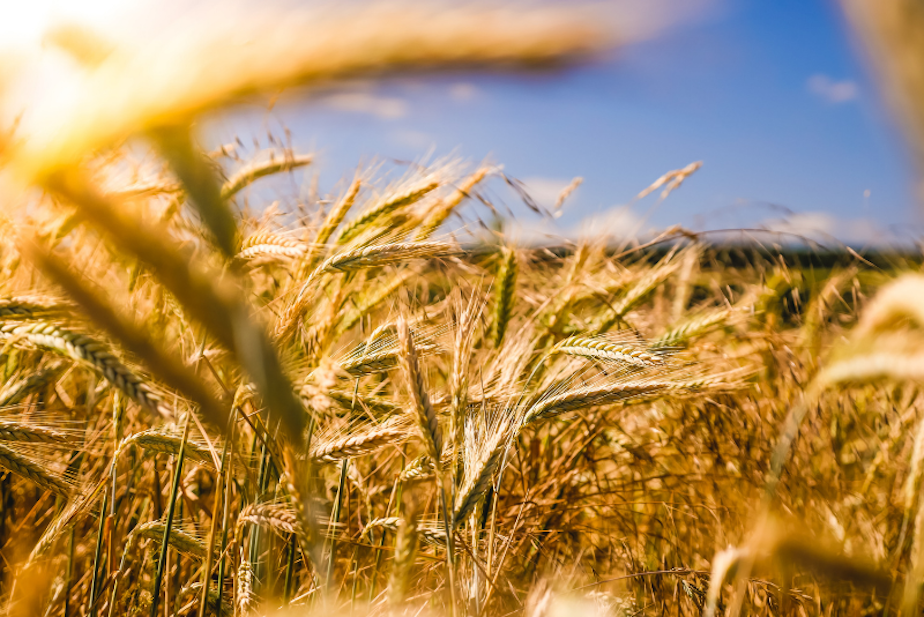Could Seattle street racing run out of gas? Today So Far

- The Seattle City Council moves forward a proposal to set up street racing cameras around the city.
- What is behind all the high gas prices around Washington.
- Mullets. 'Nuff said.
This post originally appeared in KUOW's Today So Far newsletter for July 20, 2023.
Quick hits
- Your air conditioner isn't built for this heat. 5 tips to boost performance
- Seattle Police Chief addresses video of fake tombstone at East Precinct
- This psychiatric hospital shuttered in 1973. But patient descendants and community researchers keep its lore alive
Seattle's proposal to pump the brakes on street racing just shifted into high gear as it heads for the finish line at the City Council dais later this month.
Aside from passing through the City Council's transportation committee, not much has changed from when I first covered this street racing story last month. The basic idea here is to place special traffic cameras to catch racers in areas known to have a lot of street racing. There is one notable difference, however — Seattle is now considering even more areas to put these cameras up. There were six proposed streets in June. The council is now talking about 10 — and for some reason, 35th Avenue NE (aka "I-35") is still not included on this list. See which streets the city is currently considering here.
There may be a more immediate tool that could cool down local street racing — gas prices.
Washington state currently has the highest gas prices in the nation. According to Thursday's numbers, gas prices are around $4.93 per gallon of regular gas. That is high, but keep in mind that one year ago, a gallon cost $5.20. As Scott Montgomery, a geoscientist and lecturer at the University of Washington’s Jackson School, pointed out to "Soundside," there is a pretty basic equation that adds up to gas prices: crude oil + refining + distribution + federal and local taxes = gas prices.
But there are also a few other factors that can sway prices up or down. Gas prices can be seasonal, for example. Also, recent maintenance costs on the Olympic pipeline (which brings the Northwest a lot of its gas), has added a bump to prices. And the big one that a lot of folks are talking about is Washington state's new cap and trade program, which places a price tag on carbon pollution. Gas companies are paying for that pollution, at least they are paying up front. Customers are truly paying for it at the pump.
“That is a program intended to raise the price of gasoline," Montgomery said. "When you put a price on carbon and that adds an extra cost to the producers and suppliers, that is going to raise the price."
The big question right now is: How much does cap and trade raise the price of our local gasoline? Is it a big or small bump? Right now, there is a lot of debate around the answer.
“The unfortunate side to it is that it is highly politicized," Montgomery said. "These are gasoline prices and they are the most politicized prices associated with energy in the country. It is difficult to say at this particular point how much of an impact that has on our high prices, but it does have an impact.”
But going back to adding a cost to street racing cars (and the rest of drivers), Montgomery also notes that higher gas prices are likely to become a trend as the country transitions to modern technology.
“It’s very much a historical moment. We are at the leading edge, at this point, of what's going to be happening in the U.S. in many, many states. What we are looking at is a movement toward pricing carbon and urging consumers to move toward hybrid and electric vehicles … it’s going to be a difficult transition and it will take decades for sure, but it is happening and it is accelerating at this time. This is the future, and it is here, and it’s not going to come without larger costs. Unfortunately, the poor will most likely bear a large portion of that, at least in the beginning.”
Another thing that is such a gas — mullets!
That transition was a bit of a stretch, I know, but so is the hair coming off the back of these Northwest kids competing for mullet pride. Northwest News Network profiled 4-year-old Edward-Asher Parodi of Orofino, Idaho, who is putting his mullet up for a vote. Mullet Champ organizes an annual competition for the hairstyle, broken down by age group. Parodi is competing in the Kids Mullet category (ages 1-4). He's not the only Northwesterner going for the prize. Rocky Cammarata of Bremerton is competing in the 6-year-old category. He says he started growing the hairstyle during the pandemic as a joke. The plan was to cut it in time for kindergarten to start, but the hairstyle really grew on him. He is now known as the "Washington Waterfall."
AS SEEN ON KUOW

Theo Martin owns the Island Soul restaurant in Seattle's Columbia City neighborhood. He recently spoke with KUOW about his experience across generational divides in Seattle. It's a factor that may be relevant as Seattle residents fill out their ballots. Read more here. (David Hyde / KUOW)
DID YOU KNOW?
From our 2023 perspective, many may look upon the mullet as a very '70s/'80s phenomenon. However, that up front assessment is pretty short, when actually, the mullet goes long back into history. And it spans many cultures.
This roundup on History notes that Homer's Greek epic "The Iliad" references the Abantes, who wore their hair in a very mullet way. Also, ancient Romans knew of a "Hun cut." Chief Joseph of the Nez Perce wore a long/short hairstyle in the 1800s. There were also Gallic warriors, Celtic tribes, and so on.
Whether it's just pop culture timing, or there's a more direct correlation, during the height of the pandemic, the mullet had a comeback — both to the amusement and chagrin of many. There is a bit of ironic joy in the mullet, which today is, perhaps, mostly associated with cheap beer and Lynyrd Skynyrd fans. It is certainly tied to American pop culture, which is why Iran banned the haircut in 2010 in an effort to purge the country of "decadent" western haircuts.
ALSO ON OUR MINDS

Russia's nixing of Ukraine grain deal deepens worries about global food supply
On July 17, the Russian government announced that it was pulling out of a deal to facilitate the export of millions of tons of grain from Ukrainian ports. The arrangement had been in place since July 2022. The Kremlin's move immediately sparked concern, particularly in food insecure countries.

